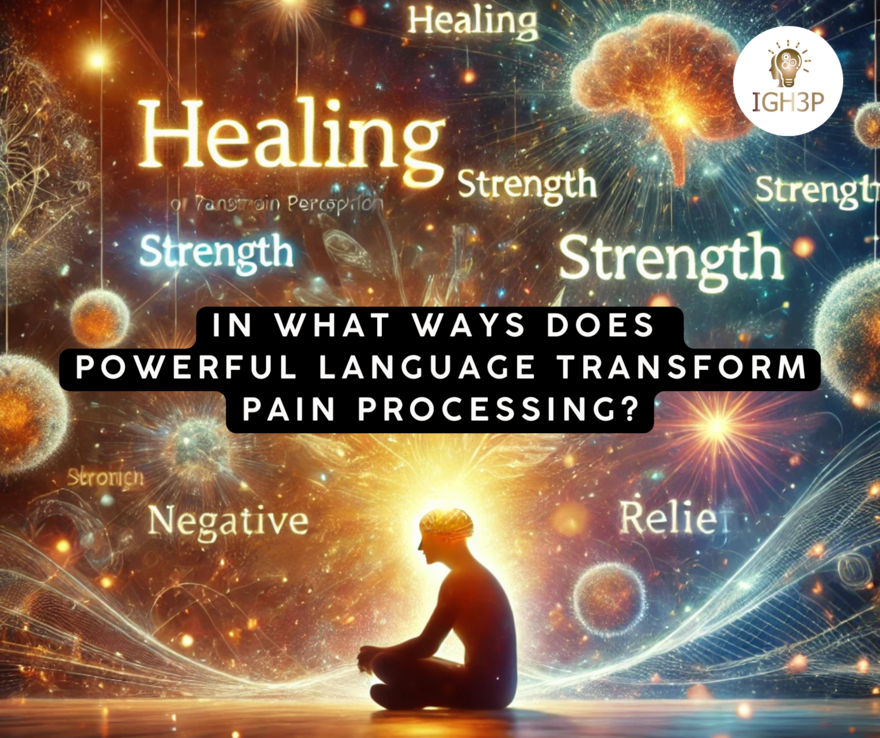In What Ways Does Powerful Language Transform Pain Processing?

In What Ways Does Powerful Language Transform Pain Processing?
Language plays a complex and important role in how individuals experience and process pain.
Research has shown that the words and metaphors we use to describe pain can influence our cognitive, emotional, and physiological responses to painful stimuli, as well as our ability to cope with and manage chronic pain conditions. 🗣️🧠
Here are some key ways in which language affects pain processing:
Attentional focus and interpretation: The language we use to describe pain can direct our attention towards or away from the painful sensation and can shape our interpretation of the meaning and significance of the pain. For example, using catastrophic language (e.g., "unbearable," "excruciating") can increase attentional focus on pain and lead to more negative interpretations and emotional responses. In contrast, using neutral or positive language (e.g., "discomfort," "sensation") can help individuals reframe their pain experience and cope more effectively.
Expectancy and placebo effects: Language can also influence our expectations and beliefs about pain, which can in turn affect our actual pain experience through placebo and nocebo effects. For example, being told that a painful procedure will be "a little uncomfortable" versus "extremely painful" can lead to different expectations and neural responses, even if the actual stimuli are the same. Similarly, using positive and reassuring language during medical procedures or treatments can enhance placebo effects and reduce pain and anxiety.
Emotional and physiological responses: The language of pain can also trigger emotional and physiological responses that can modulate pain perception and coping. For example, using fear-inducing language (e.g., "damage," "injury") can activate the amygdala and other threat-detection regions of the brain, leading to increased anxiety, muscle tension, and pain sensitivity. In contrast, using calming and reassuring language can activate the prefrontal cortex and other regions involved in emotion regulation and pain modulation, leading to reduced pain and distress.
Communication and social support: Language is also a crucial tool for communicating about pain with others, including healthcare providers, family members, and social support networks. Using clear and specific language to describe pain sensations, locations, and intensities can help individuals receive more accurate diagnoses, treatments, and support. Additionally, using empathetic and validating language when responding to others' pain can provide emotional support and reduce feelings of isolation and stigma.
Cognitive and behavioural strategies: Finally, language can be used as a tool for teaching and practicing cognitive and behavioural strategies for managing pain, such as relaxation, distraction, and self-talk.
For example, using positive and encouraging self-talk (e.g., "I can handle this," "This will pass") can help individuals reframe their pain experience and engage in adaptive coping behaviours. Similar behavioural imagery and metaphorical language can help individuals relax and distract themselves from pain sensations.
While language is just one of many factors that influence pain processing, it is an important and modifiable one that can be targeted in pain management interventions and communication strategies.
By becoming more aware of the language we use to describe and respond to pain and by using language in more adaptive and supportive ways, individuals and healthcare providers can help optimise pain coping and outcomes. 🌟
#LanguageOfPain #PainCommunication #PainManagementStrategies #igh3p

0 comments
Leave a comment
Please log in or register to post a comment